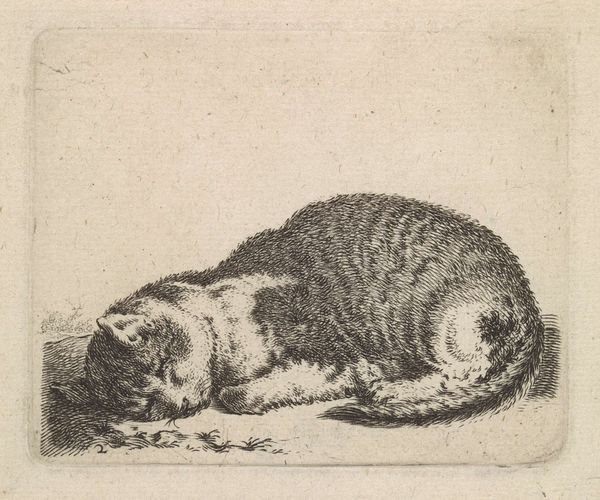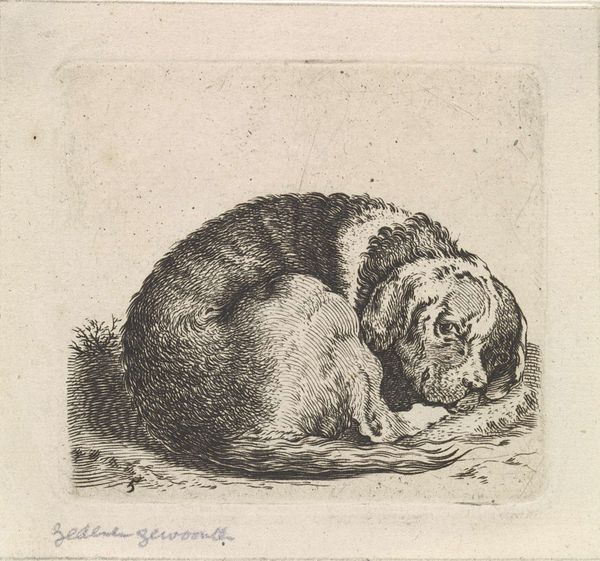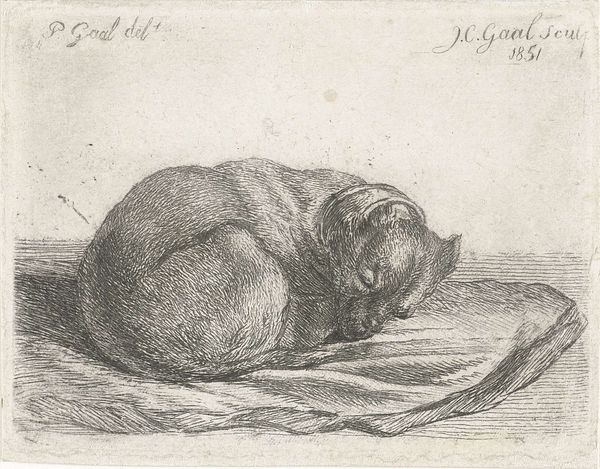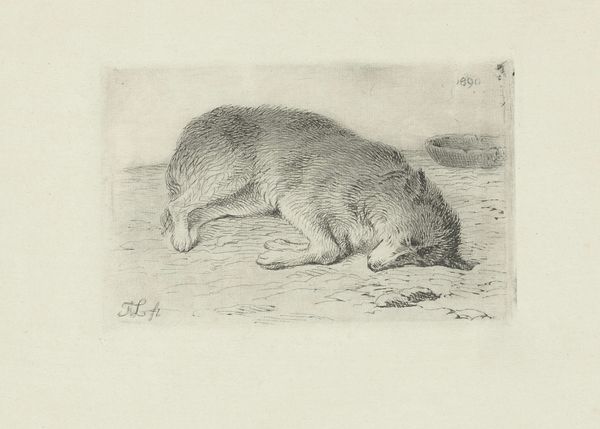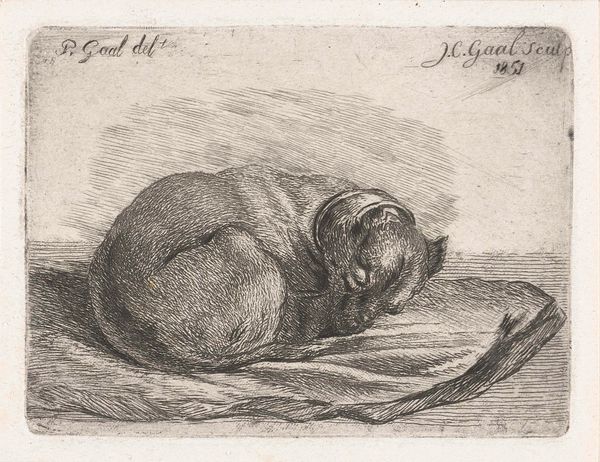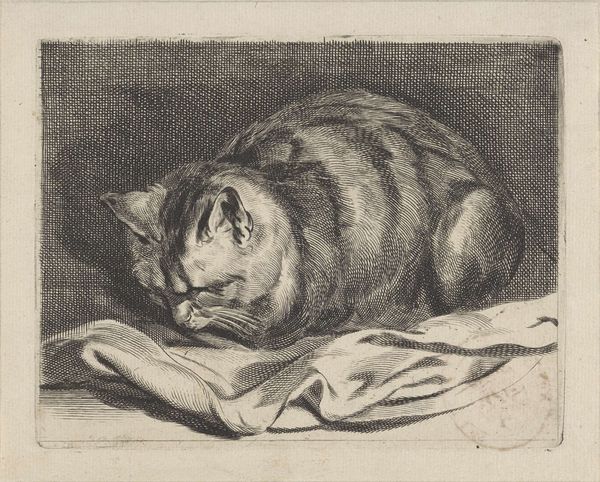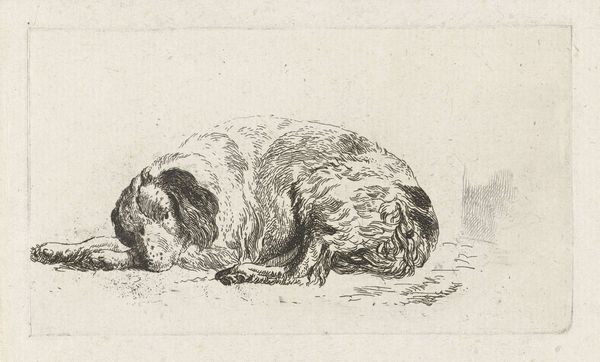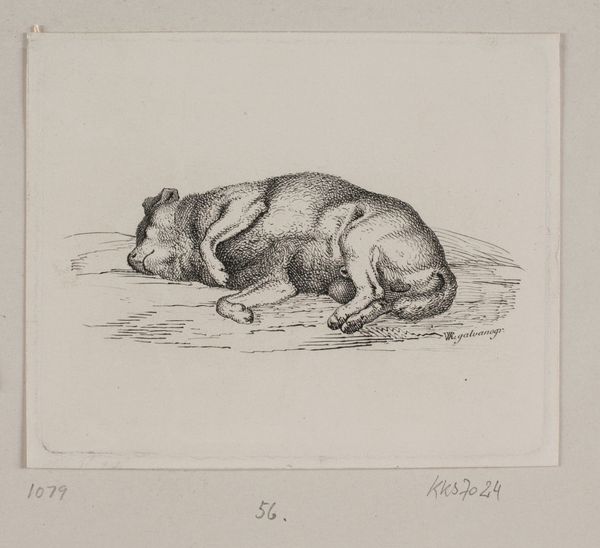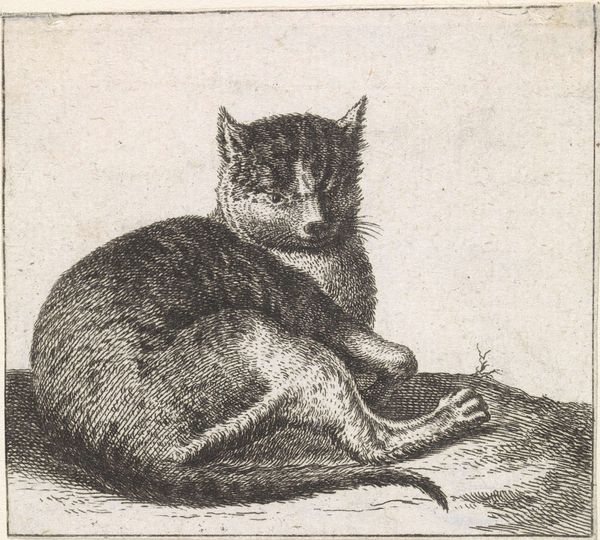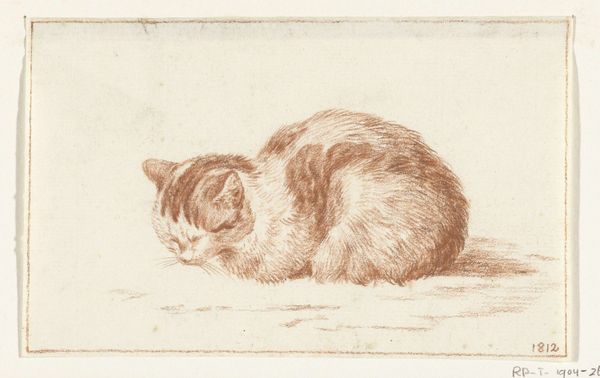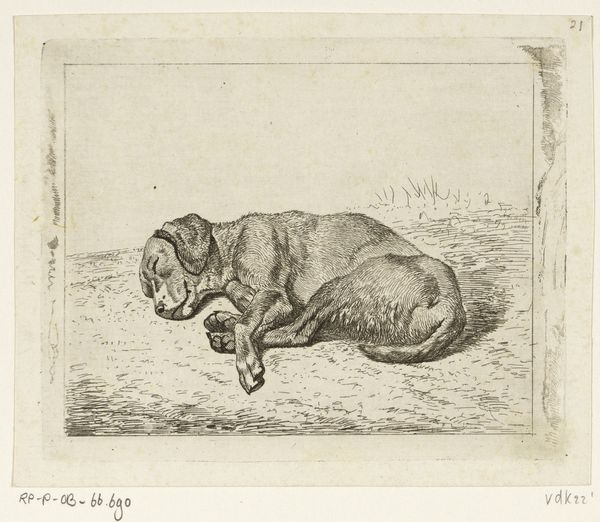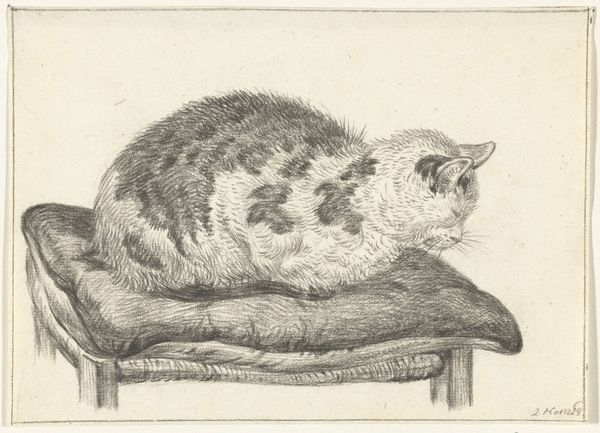
print, etching
#
animal
# print
#
etching
#
dog
Dimensions: height 75 mm, width 82 mm
Copyright: Rijks Museum: Open Domain
Curator: Looking at Cornelis Saftleven's "Sleeping Dog," a 17th-century etching, reveals a deliberate contrast between high art expectations and humble subject matter. What stands out to you initially? Editor: It’s interesting that such a commonplace scene would be rendered as a print, which feels…precious, somehow. I am also drawn to how the artist captures the texture of the dog's fur through such simple etching. How might this technique and the choice of subject relate to broader social contexts of art production at the time? Curator: Exactly! This work defies a simple genre classification. We see a rejection of idealized or heroic subjects in favor of the everyday, and that choice elevates the life of the mundane. It draws attention to the artist's labor and process. What impact might making it a print—something reproducible— have on who can engage with it? Editor: Well, the reproducible aspect seems subversive; art being available for the enjoyment of ordinary people and also being about an ordinary animal…Was Saftleven making a commentary about what could and could not be art? Curator: Perhaps, yes. The use of etching, a more accessible and arguably less "refined" printmaking technique, aligns with this democratizing impulse. The physical act of etching the plate, creating multiples, suggests a blurring of lines between artisanal craft and fine art production. What implications does this have, thinking about consumption, access, and the art market? Editor: I suppose that by making his work reproducible Saftleven opened it up to a larger audience than if the work were, say, a unique painting, yet the choice of subject means that there are those for whom this art wouldn't "count" in the same way. Curator: Precisely. Considering the socio-economic forces at play – patronage, printmaking's burgeoning market, the expanding middle class – helps us to grasp that ‘Sleeping Dog’ is as much a statement on artistic value and labor as it is about the animal itself. Editor: This makes me think about how art can reflect or resist the values of the culture in which it's created. Curator: Yes, looking at art through its materiality and methods, as much as subject matter, offers rich and profound insights.
Comments
No comments
Be the first to comment and join the conversation on the ultimate creative platform.

